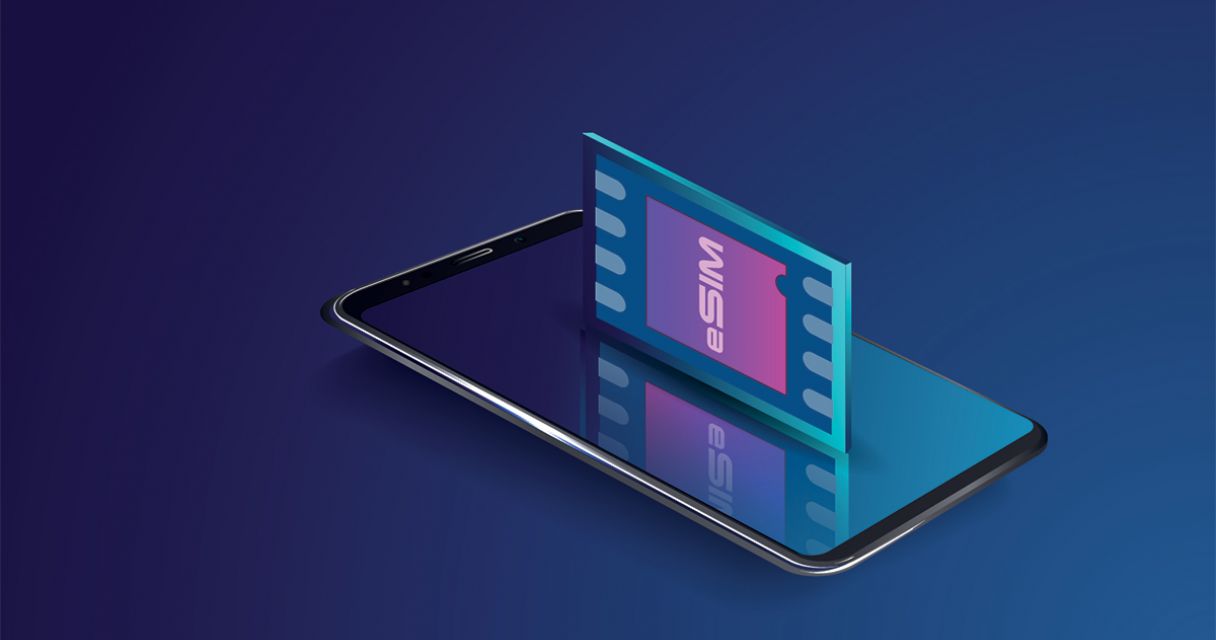Using eSIM as a route to enhanced customer loyalty
Why has the world gone e- (embedded) SIM mad?

Why has the world gone e- (embedded) SIM mad? There’s no madness here at all, actually—because eSIM, or the new wave of industry-standard digital SIM ‘cards’, just makes sense on so many different levels.
eSIM is a global specification by the GSMA designed to enable remote SIM provisioning of any mobile device.
That allows consumers to store multiple operator profiles on a device simultaneously and switch between them remotely (though only one can be used at a time).
Billions of connections = billions of eSIM opportunities
Which is great—because as a customer, no longer being tied to a physical SIM means I have so much more flexibility than otherwise, like being able to have multiple subscription plans if I am a frequent flyer or digital nomad so I can switch seamlessly to a profile from a different provider if I'm in a country where my main plan might not serve my needs effectively.
It would be useful to be able to offer valuable, highly mobile customers such a plan—or even other options for other types of subscribers you want to either retain or attract. There’s also the whole slew of use cases emerging from new classes of non-human ‘customers,’ of course—like eSIM in IoT devices, where we may have over 2.2 billion such connections by 2030 alone.
We say ‘useful’; a lot of people are already persuaded. The global size of the eSIM market is estimated to reach $17.5 billion by 2030, and $19.35 billion by 2031; other market-watchers think the current eSIM market was worth nearly $4.8 billion in 2023. GSMA predicts there will be approximately 850 million eSIM smartphone connections globally by 2025—a number set to grow to 6.7 billion by 2030, and so would represent a massive 76% of all total smartphone connections.
Why you can’t afford to get your eSIM certification wrong
Given all this, you know that you must start the long, but inevitable, move from only being able to offer physical SIM cards to eSIM.
You know you want to take control of that evolution--but you’ve no idea how to go about doing it in the most reliable and friction-free way for you as a business.
The only way the transition makes the best business sense is if you only collaborate with partners that have the right, up to date GSMA certifications – together with the infrastructure to enable eSIM-based services.
Why: because security is so integral to the shift to eSIM that you can’t afford to get it wrong.
The process works on validation of what’s essentially now just a software profile with other people’s servers that can tell whoever is asking it's a legitimate profile authorised/recognised by all right actors when you're roaming: if you don’t have that side locked down, you’re not going to make this work.
You’re certainly going to want to work with someone 100% up to speed, for example, with the GSMA’s compliance framework for eSIM capable Devices, eUICCs and Subscription Management servers, GSMA PRD SGP.24—let alone its eSIM Security Accreditation Scheme, the required security accreditation for eSIM entities handling sensitive assets.
SNS will make your move into launching an eSIM product as safe as possible
The eSIM ecosystem is a trusted chain of stakeholders, then, is quite complicated and could be easy to get wrong. But if you don't have eSIM today or soon, you're missing out.
That means you need to be able to work with an expert third party that can handle all this technical complexity, and which understands all the eSIM regulations and requirements.
Even more importantly, you’re going to want to get the right expert guidance from someone who knows all about the security implications and who can help bring you together with the right providers to make your move into launching an eSIM product as safe as possible.
If all this seems like a lot of work and hassle, don’t forget that you’re going to gain significant business advantages from digital/embedded Subscriber Identity Modules.
For one, think about the difference it could make to all your shipping costs, your inventory management, and other supply chain-related SIM overheads.
Think about how easy it will now be to remotely switch on or off targeted packages for short periods of time for new potential customers in Thailand, Malaysia, Cambodia, or Vietnam—allowing you to make hyper-niche (and so, profitable) targeted offers but with all the work on management profiles, register to secure networks and so on happening from your main HQ management console, not physically there.
SNS: a complete range of eSIM MVNO enablement solutions
Sounds good? The next hurdle: getting all this off the ground.
We said the pivot to eSIM sounded like a lot of work and hassle. And it can be--but not if you work with an eSIM transition expert like SNS.
Fully compliant with all those GSMA requirements (and ones we didn’t even mention), the SNS eSIM enablement services for MVNOs allow you to instantaneously deliver profiles to IoT and personal mobile devices, for example.
In fact, SNS offers a complete range of eSIM enablement solutions for MVNOs--allowing you to rapidly launch eSIM propositions and services.
If that sounds like exactly what you need, click here to start your transition to eSIM in the best possible way: with someone who knows how to do it—and has already helped other organisations just like you do it, too.